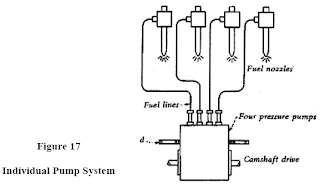Basics of a Milling Machine
A milling machine is one of the most used shop tools in today's manufacturing world. Without it, hours and hours of manual labor would be required to produce even simple machine parts. Today's manufacturers depend on mills to give them the parts they need quickly, efficiently and at an affordable cost.
This amazing piece of shop equipment is used to shape solid material such as metal, plastic, brass or wood. It is somewhat different than a lathe because finished parts are not cylindrical. A mill uses a high-speed cutting tool that moves over and into material that has been securely placed on the table. A mill can produce a finished part or a vacuum forming mold. Today's mills are not usually designed to cut underneath a top surface. Instead, they more effectively create many separate components which can later be formed into more complex items.
CNC (Computer Numerical Control) technology is primarily used in today's sophisticated machine mills. This method of control uses CAD/CAM technology to program the commands necessary to run the mill smoothly and efficiently. With CNC, there is little need for human intervention in the production process because everything is pre-programmed from start to finish. Items are pre-designed on a 3-D computer screen and then are physically generated through the programmed milling process.
There are two primary types of machine mills - vertical and horizontal. The vertical version's axis is vertically oriented and its cutters are held in the spindle, rotating on the axis. Two types of vertical mills are bedmills and turret mills. In a turret mill, the spindle always remains stationary during cutting but in a bedmill, the table moves perpendicularly to the spindle axis. A horizontal mill has its cutters mounted horizontally rather than vertically. This type of mill is effective when shallow angles are desired in the milling process.
A milling machine is invaluable in any manufacturing shop. While its initial cost may seem high, the overall efficiency and effectiveness of the machine will more than cover any original monetary outlay.
This amazing piece of shop equipment is used to shape solid material such as metal, plastic, brass or wood. It is somewhat different than a lathe because finished parts are not cylindrical. A mill uses a high-speed cutting tool that moves over and into material that has been securely placed on the table. A mill can produce a finished part or a vacuum forming mold. Today's mills are not usually designed to cut underneath a top surface. Instead, they more effectively create many separate components which can later be formed into more complex items.
CNC (Computer Numerical Control) technology is primarily used in today's sophisticated machine mills. This method of control uses CAD/CAM technology to program the commands necessary to run the mill smoothly and efficiently. With CNC, there is little need for human intervention in the production process because everything is pre-programmed from start to finish. Items are pre-designed on a 3-D computer screen and then are physically generated through the programmed milling process.
There are two primary types of machine mills - vertical and horizontal. The vertical version's axis is vertically oriented and its cutters are held in the spindle, rotating on the axis. Two types of vertical mills are bedmills and turret mills. In a turret mill, the spindle always remains stationary during cutting but in a bedmill, the table moves perpendicularly to the spindle axis. A horizontal mill has its cutters mounted horizontally rather than vertically. This type of mill is effective when shallow angles are desired in the milling process.
A milling machine is invaluable in any manufacturing shop. While its initial cost may seem high, the overall efficiency and effectiveness of the machine will more than cover any original monetary outlay.



Comments